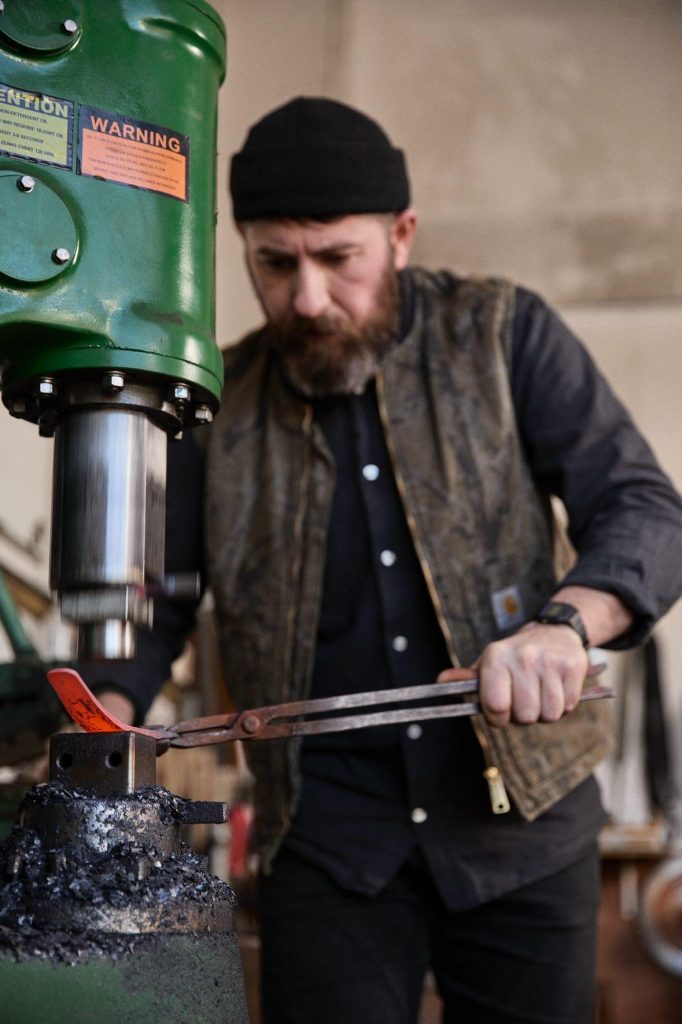
Some of my favorite meals in the world are simple dishes. Minimal ingredients put together with care and passion can create something soul satisfying, and delicious with nothing to hide behind. That to me is the culinary correlation to the work being done by Simon Maillet, the focus of this week’s interview. He is a very talented maker, and I am very pleased to be able to introduce your work to him.
To start off, please tell us a little about yourself.
I’m Simon, a French knife maker specializing in kitchen knives that are Japanese inspired. After studying and working as a Landscape architect and urban planner for several years, I moved to the UK to learn English and start working as a chef in a restaurant in Manchester. I then moved to Sheffield to start making knives. I recently came back to France, and I now live near Nantes in West France.
What sparked your interest in knives?
Through cooking mainly, but also as an everyday tool for the countryside boy that I was.
What inspired you to do this, and how did you learn?
Moving to Sheffield had a big impact on me. I met many makers that worked around or in the knife industry. It’s a fascinating city with an incredibly long history with metal, tools, manufacturing, and craft. I’m self-taught but I met many people that helped me to understand knives in general. I took a four-day training with a blacksmith in France, when I started, to help me understand fire management and hammering.
When did you start making knives?
I started in 2019 as a hobby (part-time one day a week) then professionally and full time in 2020.
What did you make your first knife with?
The very first knife was made in my dad’s old BBQ that I turned into a forge in 2012. I used a big band saw blade for the steel, and a piece of oak for the handle.
Do you have a favorite knife you made, tell me about it?
I don’t have a favorite knife, maybe because I see knives as tools. Each tool fits a purpose, and none is better than any other. I keep a record of all the knives I made (around 1,200 since I started), and every year I find one or two knives that are better. They become my inspiration to continue to progress.
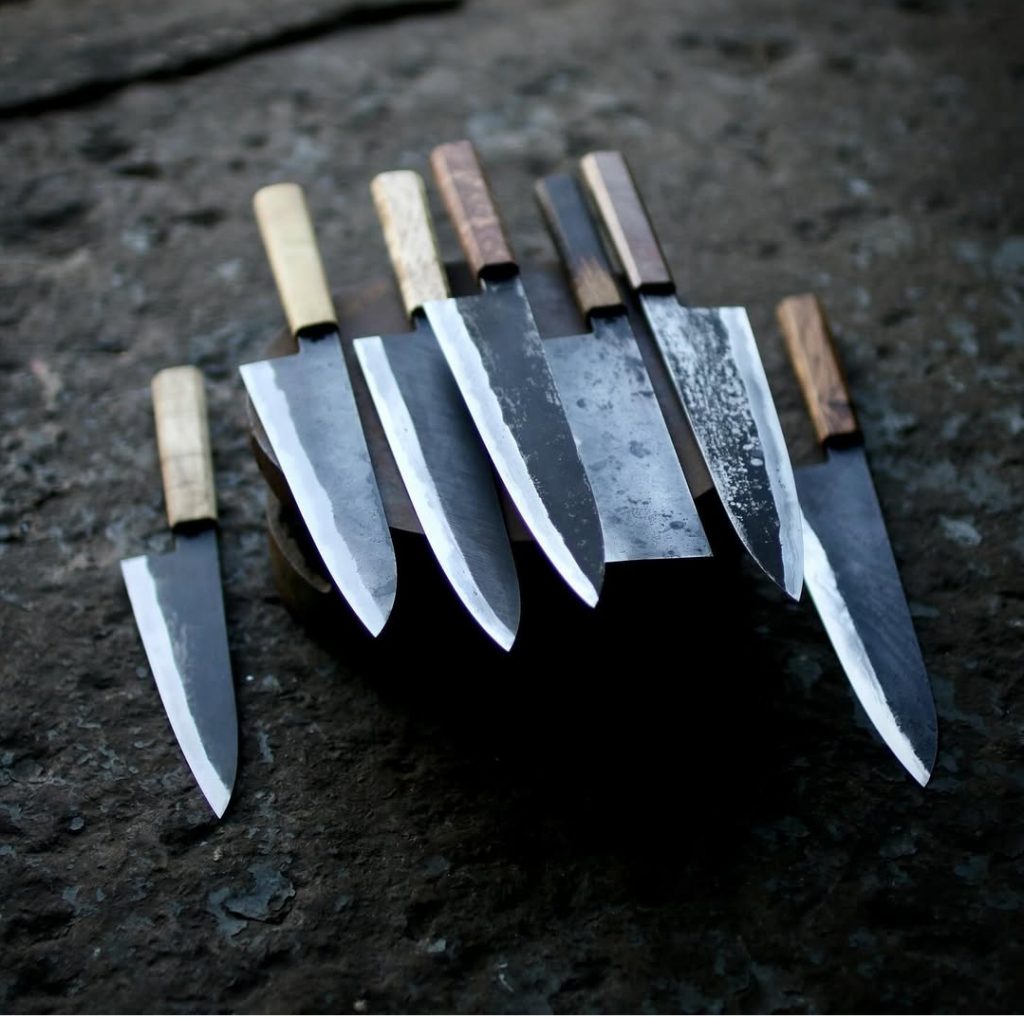
What is the most important aspect of a well-made knife?
Kitchen knives are all about preferences, habits, or style of cooking. In my opinion the most important aspects are the cutting performance, and ease of maintenance. How well the knife cuts and how easy to sharpen it is (as well as thinning the blade or cleaning the bevels).
What keeps you going?
I love the freedom that I have to work as an independent and the level of dedication I can give to one specific aspect of knife making.
What’s your biggest struggle?
Managing my health / mental health as it can be easy to lose myself in the work and get exhausted (physically and mentally).
What kinds of knives do you make?
Kitchen knives with a focus on finish that can be easily maintained and enhanced at home / in the kitchen. I like to finish on bench stones rather than a grinder. Low bevels. Kurouchi. Carbon steel blades made with the san-mai technique.
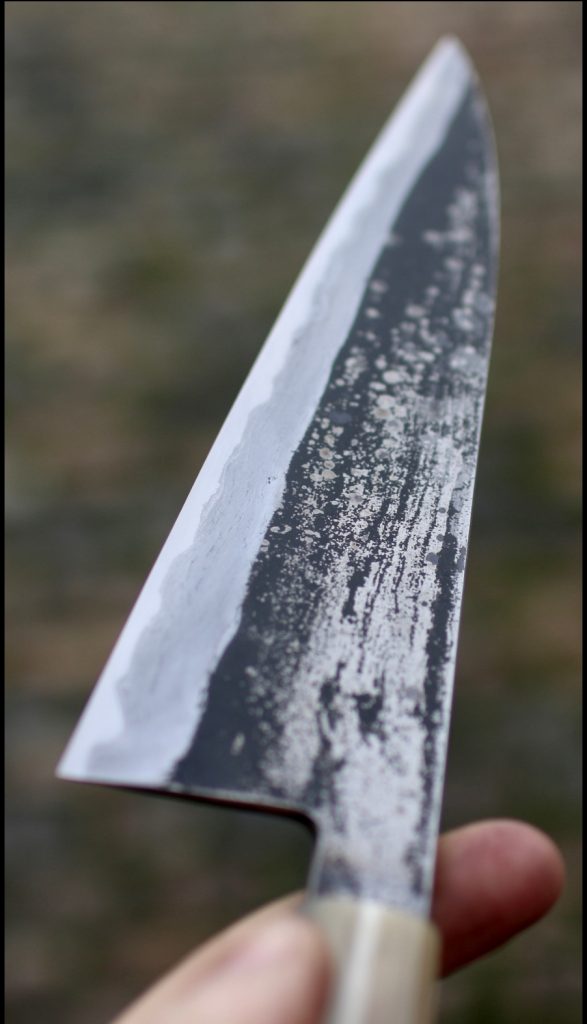
How did your background affect your approach to knives?
Not sure it does a lot, but I love the idea of simplicity in my knives like I do in gardening.
Who helped you early on?
My biggest help came from Scott Mclellan (@sheffield_knife_sharpening). He was a knife enthusiast when I met him in Sheffield in 2019, and he is now one of the best knife sharpeners in the world. He also makes knives under the brand Yuki knives. Scott is really kind of my mentor as he educated me as to what makes a good knife. He was a massive support in my personal life too. We share a lot, almost on a daily basis.
Who are your influences/inspirations?
I was (and still am) heavily inspired by Japanese makers like Teruyasu Fujiwara and Jiro Nakagawa, or by French makers like Yanick Puig and Bryan Raquin. Obviously, by Scott’s sense of aesthetic.
How do you think that inspiration translates into your work?
We sit on the shoulders of giants. It’s inspiring to look at other people works. The better I understand the craft the more I respect them. I think Yanick and Bryan created a sort of a « French style » ten years before I started making knives. I’m not very creative as I struggle to think of new shapes, ideas, and concepts but I can express myself within this « French style » I think.
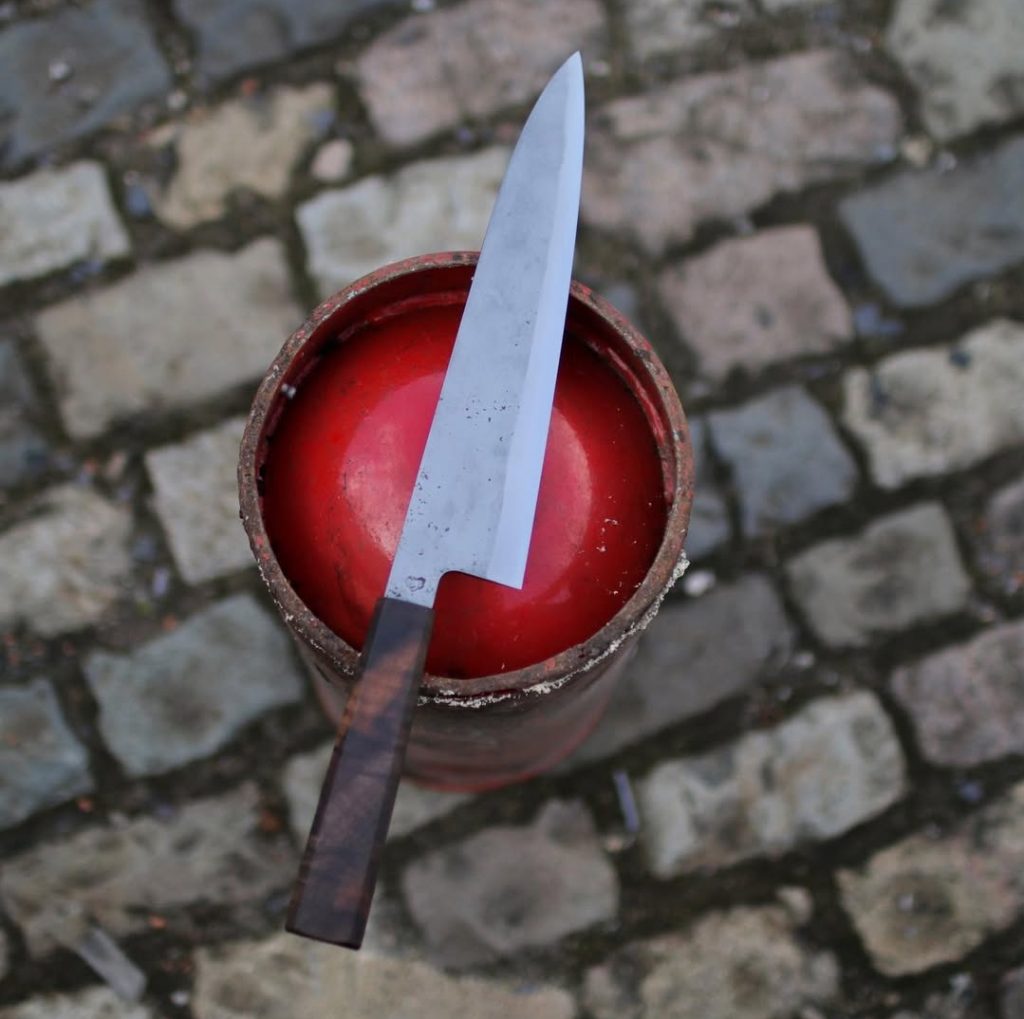
Any specific breakthroughs or revelations in your knife making journey?
I love making knives, I don’t know why I didn’t start earlier. No major breakthroughs, as to me this craft is more an accumulation of little understandings each day.
What is the perfect knife?
I honestly don’t know, and I don’t aim for perfection.
How do you approach a new concept and that concept’s implementation?
I don’t think too much in term of concept. I never draw a knife before making it, but I let the forging develop organically the shape and geometry. I think the repetition and the muscle memory are the basis of my work. I aim to make as many knives as possible with a small improvement on each of them. I use clients or personal feedback from the kitchen to steer and set some of the features on my knives (handle size and shape, emoto(neck), bevels, geometry, finish, steel, hardness….)
How do you approach knife testing?
I cook a lot and use them at home. I also listen to feedback from trusted clients and chefs.
How do you develop a design, select a steel, and fine-tune a heat treatment?
I use very classic / traditional shapes (Japanese or western), so I don’t really « design » anything . I work with very simple and similar low alloyed steel (26C3, 135Cr3, Shirogami 1) for 99% of my blades. It helps me to understand how the steel reacts and what are its limits. Every month I test all the steel I use by breaking for grain size, Rockwell hardness and edge retention. It helps me to know if my process is still good and my machine is calibrated correctly. Then I adjust accordingly.
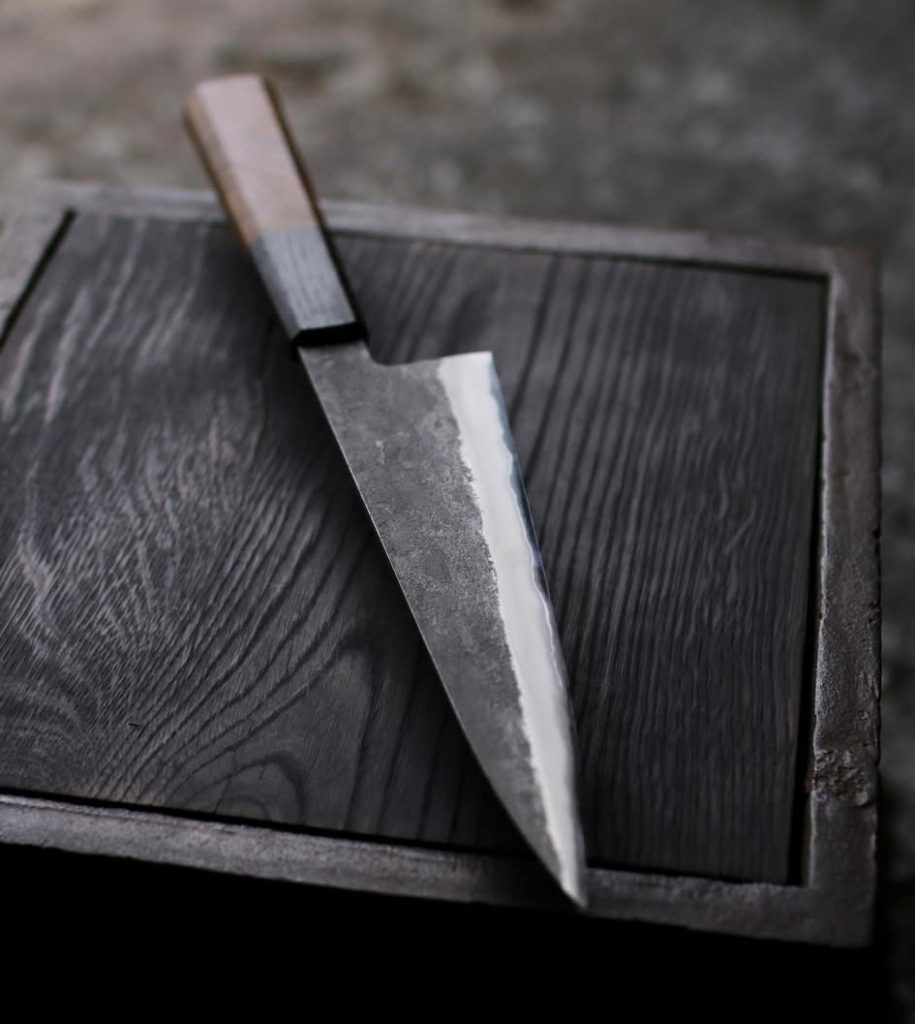
What is your favorite steel, and what do you like about it?
I’d have to say 135Cr3 it is laminated in France at the Saut du Tarn mill and used for hand tools and rasps or files. It’s a relatively « simple » steel in the world of powder steels and more modern steels, but it works great for the kind of knives I like to make. Easy to forge, heat treat, and sharpen. It is in thick sections (6.5mm) and it’s cheap.
How has the knife world changed since you started?
I don’t think it changed much since I started 5 years ago. Maybe the social media platforms make it harder to be easily visible as a craft-person but that was predictable as the platforms are owned by private companies who are trying to make money. Today, if you want to be visible, you need to be profitable for the platforms, or you need to pay them.
What’s up next for you? Any exciting new projects to tell us about?
I would like to start to work more with a polisher or sharpener like Steve from Rockchop Knife Co. My idea is to be able to make some blank blades for him so he can work his magic on them. I started to make Honyaki blades too as it’s a very long path to master the hamon and polishing, I need to start now if I want to be any good in a couple of years.
To learn more about the work Simon is doing, and keep track of his projects head over to his website http://www.simonmaillet.com or check out his Instagram http://www.instagram.com/simonchefknife
Leave a Reply